Mastering Hibachi Style Chicken
Hibachi style chicken captures the essence of Japanese steakhouse cooking right in your kitchen. This recipe features bite-sized, boneless, skinless chicken breasts that are quickly seared on high heat with a savory blend of soy sauce, teriyaki or mirin, fresh garlic, and ginger. The final hint of sesame oil adds depth and authenticity to the dish. It’s a simple yet flavorful preparation that delivers tender, juicy chicken with a subtle char and rich glaze.
What makes hibachi style chicken special is its balance of bold flavors and quick cooking technique. By using a hot skillet or wok, you achieve a perfect sear that locks in moisture while the sauce reduces into a sticky, savory coating. This dish is ideal for weeknights when you want a quick, delicious dinner that pairs well with hibachi rice, noodles, or sautéed vegetables. Whether you are a beginner or an experienced cook, mastering this recipe opens the door to recreating Japanese steakhouse classics at home.
Jump To
- 1. Mastering Hibachi Style Chicken
- 2. Benefits and Advantages of Hibachi Style Chicken
- 3. Essential Ingredients for Hibachi Style Chicken
- 4. Dietary Substitutions to Customize Your Hibachi Style Chicken
- 5. How to Prepare the Perfect Hibachi Style Chicken: Step-by-Step Guide
- 6. Mastering Hibachi Style Chicken: Advanced Tips and Variations
- 7. How to Store Hibachi Style Chicken: Best Practices
- 8. Nutritional Value of Hibachi Style Chicken
- 9. FAQs: Frequently Asked Questions About Hibachi Style Chicken
- 10. Authentic Hibachi Chicken: Simple Recipe for Japanese Restaurant-Style Flavor at Home
Benefits and Advantages of Hibachi Style Chicken
Quick and Easy to Prepare
This recipe excels in speed and simplicity, taking only about 25 minutes from start to finish. It suits busy individuals and families looking for a satisfying meal without long prep times.
Healthy and High in Protein
Using boneless, skinless chicken breasts provides a lean protein source that fits well in balanced diets. The minimal use of oil and flavorful low-calorie sauces keeps the dish light yet flavorful.
Customizable Flavor Profile
The recipe allows you to adjust the sauces—choosing between soy sauce, teriyaki, mirin, or hoisin—and add additional spices like crushed red pepper for heat. This flexibility appeals to varying taste preferences.
Restaurant-Quality Flavor at Home
By incorporating fresh garlic, ginger, and sesame oil, the dish authentically replicates the essence of Japanese hibachi cooking without requiring specialized equipment. It pairs perfectly with quintessential sides for a complete meal experience.
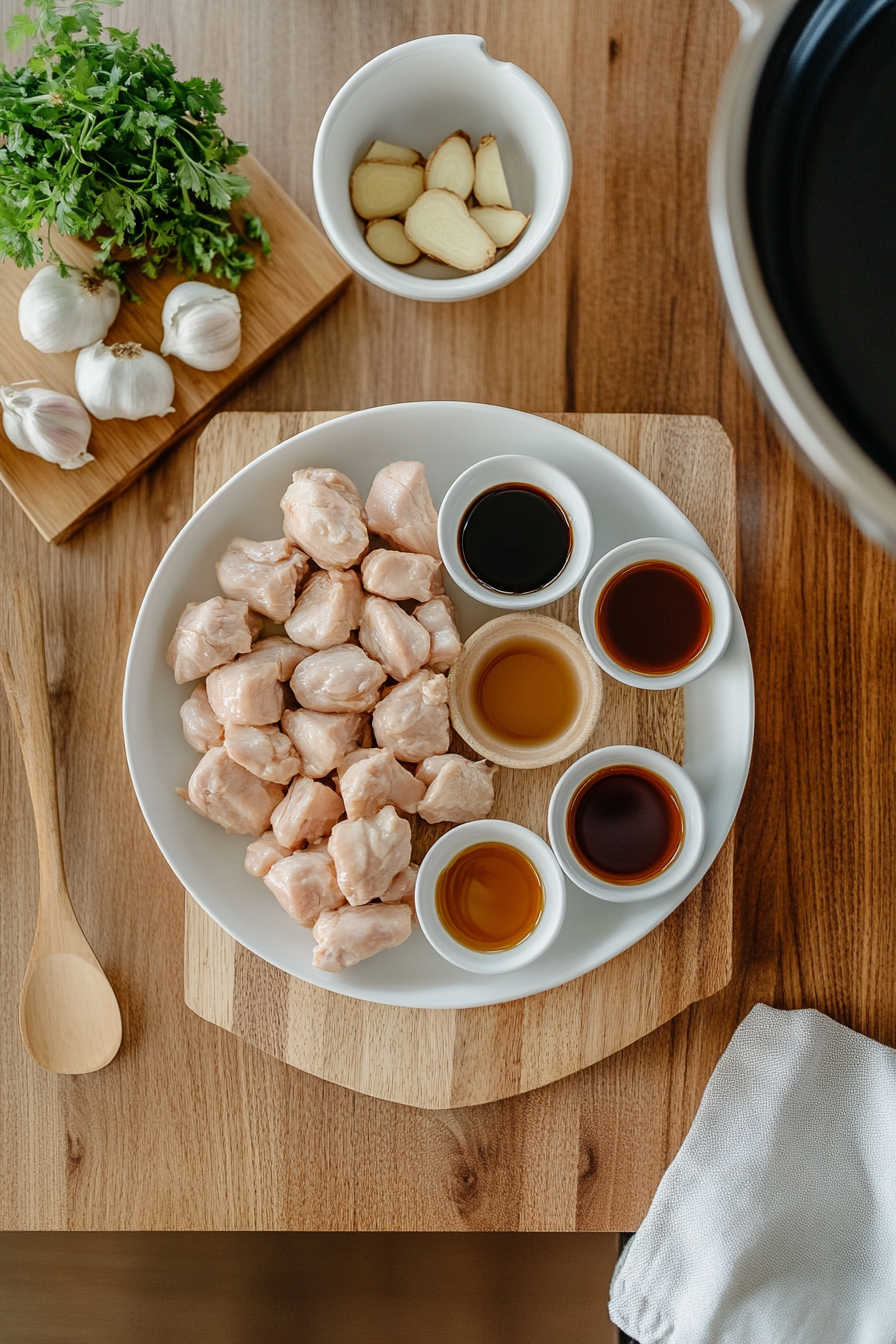
Essential Ingredients for Hibachi Style Chicken
| Ingredient | Quantity | Purpose / Benefit |
|---|---|---|
| Boneless, skinless chicken breasts (or thighs) | 1 lb, cut into bite-sized pieces | Lean protein, easy to cook evenly |
| Butter or sesame oil | 1 tablespoon | Used for searing; adds rich flavor |
| Minced fresh garlic | 1 teaspoon | Provides warm, aromatic flavor |
| Minced fresh ginger | 1 teaspoon | Adds brightness and a hint of spice |
| Soy sauce | 1 ½ tablespoons | Salty, umami flavor base |
| Teriyaki sauce, mirin, or hoisin sauce | 1 ½ tablespoons | Sweet and savory variation options |
| Salt and pepper | To taste | Basic seasoning for balance |
| Sesame oil (for finishing) | 1 teaspoon | Enhances aroma and adds nuttiness |
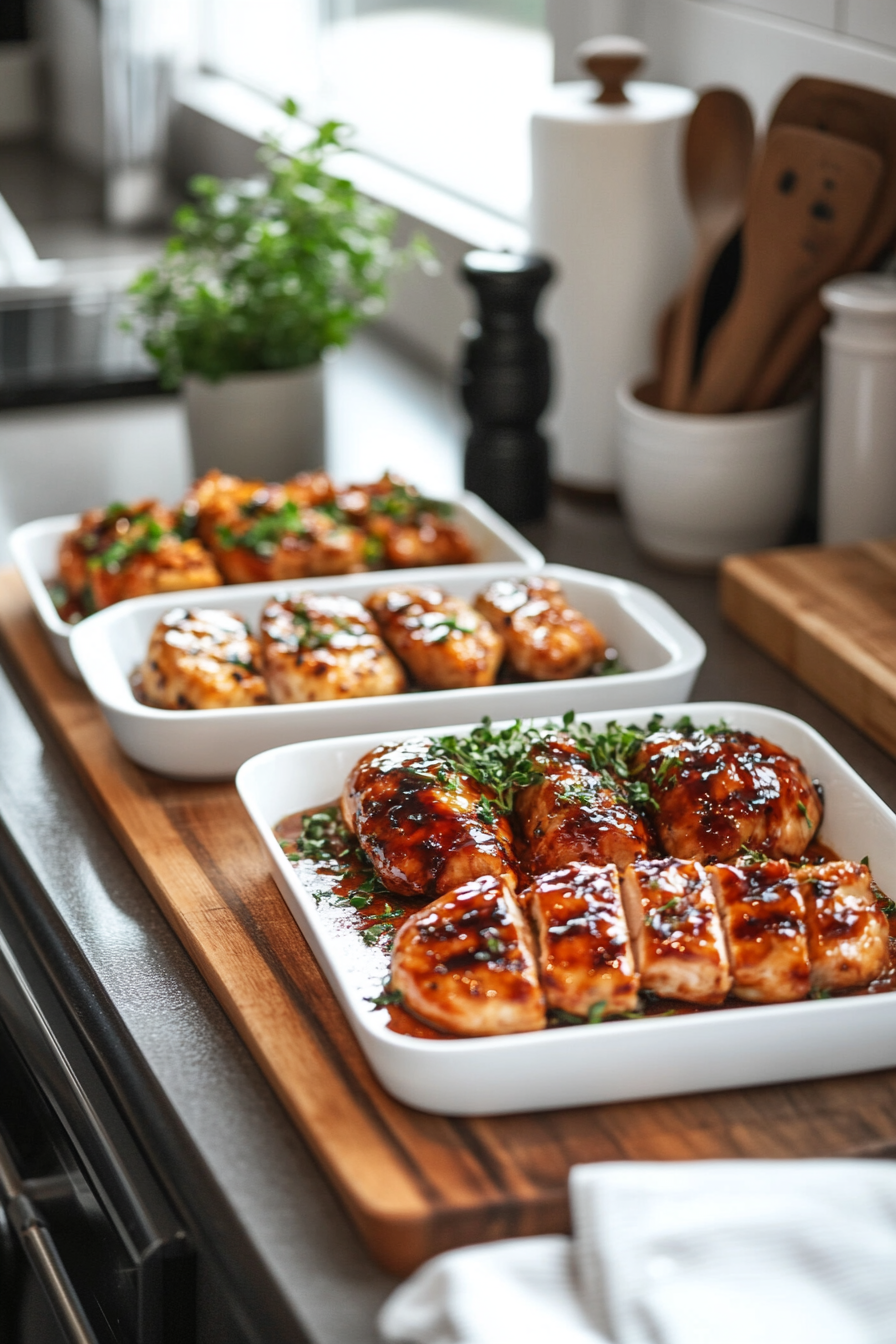
Dietary Substitutions to Customize Your Hibachi Style Chicken
Chicken Alternatives
If you prefer, substitute chicken breasts with boneless skinless thighs for more richness and moisture. For those avoiding poultry, firm tofu or tempeh can be marinated and cooked similarly for a plant-based option.
Sauce Variations
Gluten-free soy sauce or tamari can easily replace regular soy sauce to accommodate gluten sensitivity. Teriyaki sauce offers a sweeter note, while mirin adds a mild acidity. Hoisin sauce introduces a deeper, slightly tangy flavor profile which can be delightful but denser.
Oil Choices
Use avocado oil or grapeseed oil if sesame oil is unavailable or if preferring a more neutral oil. Reserve the sesame oil to drizzle at the end for authentic flavor impact. For a dairy-free choice, replace butter with oil as needed.
Spice Adjustments
Add crushed red pepper flakes or sriracha for heat if desired, or tone down the garlic and ginger amounts to suit a milder taste. Fresh herbs like scallions can add freshness without changing dietary restrictions.
Customizing your hibachi style chicken helps you create a dish tailored to your dietary needs and flavor preferences without sacrificing authenticity.
Explore more lean protein recipes like our Air Fryer Steak Bites for quick, satisfying meals packed with flavor.
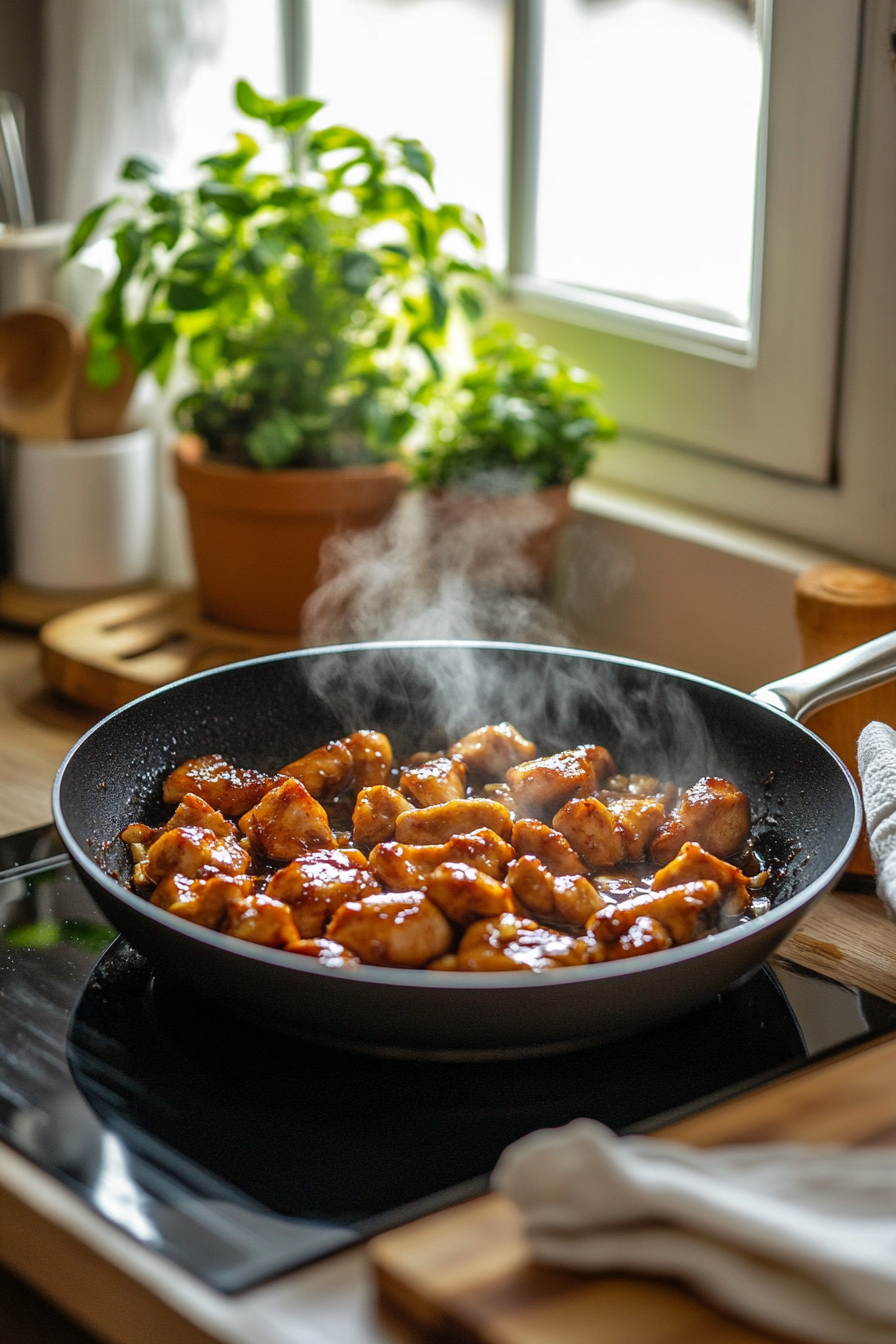
How to Prepare the Perfect Hibachi Style Chicken: Step-by-Step Guide
Creating authentic hibachi style chicken at home is easy and rewarding with the right approach. Follow these detailed steps to achieve tender, flavorful chicken with that classic Japanese steakhouse flair.
First Step: Prepare the Sauce
In a small bowl, combine 1½ tablespoons soy sauce with 1½ tablespoons teriyaki sauce (or mirin or hoisin for variation) and freshly ground black pepper to taste. Set this flavorful sauce aside as it will be used later to coat the chicken.
Second Step: Sauté Garlic and Ginger
Heat 1 tablespoon of butter or sesame oil in a hot skillet or wok over medium-high heat. Add 1 teaspoon minced fresh garlic and 1 teaspoon minced fresh ginger, sautéing until fragrant, about 30 seconds to 1 minute. This builds the aromatic base for your chicken.
Third Step: Cook the Chicken
Add 1 pound of boneless, skinless chicken breasts cut into bite-sized pieces to the skillet. Season with salt and pepper. Spread the chicken evenly and let it sear without stirring for a couple of minutes, then toss to sear all sides evenly until cooked through and lightly charred.
Fourth Step: Add Sauce and Finish Cooking
Pour the prepared sauce over the chicken and stir to coat all the pieces. Continue cooking until the sauce thickens slightly and clings to the chicken, usually 2-3 minutes. Drizzle a teaspoon of sesame oil on top for that classic nutty finish.
Fifth Step: Plate and Serve
Serve the hibachi style chicken immediately, accompanied by hibachi rice, noodles, or sautéed vegetables. For an authentic experience, pair it with homemade yum-yum sauce.
High heat and quick searing are crucial to replicate the signature hibachi flavor and texture.
Mastering Hibachi Style Chicken: Advanced Tips and Variations
Tips for Perfect Hibachi Chicken
- Use a cast iron skillet or wok: These provide even heat and better searing compared to regular pans.
- Fresh garlic and ginger: Fresh ingredients yield much more robust flavors than powders or pastes.
- Maintain high heat: This is key for quick cooking and achieving the slight char that defines hibachi chicken.
- Don’t overcrowd the pan: Cook in batches if needed to keep that perfect sear on each piece.
- Marinate for extra flavor: Though optional, marinating chicken for 15-30 minutes in a little soy or teriyaki sauce enhances tenderness and taste.
Flavor Variations
- Substitute teriyaki with mirin or hoisin sauce for a sweeter or deeper flavor.
- Add a touch of crushed red pepper or chili flakes for a mild spicy kick.
- Mix in vegetables like sliced mushrooms, zucchini, or onions while cooking for added texture and nutrition.
- Top with toasted sesame seeds or chopped scallions before serving for extra aroma and color.
Feel free to experiment with these adjustments to personalize your hibachi chicken recipe and impress your family and friends.
How to Store Hibachi Style Chicken: Best Practices
Refrigeration
After cooking, allow the hibachi chicken to cool to room temperature before transferring it to an airtight container. It can be stored safely in the refrigerator for 3 to 4 days.
Freezing
For longer storage, place cooked chicken in a freezer-safe container or bag, removing as much air as possible. Freeze for up to one month. Thaw overnight in the refrigerator before reheating.
Reheating
- Reheat in a skillet over medium heat to maintain the chicken’s texture and prevent drying out.
- A microwave can be used but cover the chicken to retain moisture and avoid rubbery texture.
- For best results, reheat gently and avoid overcooking.
Proper storage and reheating keep your hibachi style chicken tasty and fresh for later enjoyment.
Nutritional Value of Hibachi Style Chicken
| Nutrient | Approximate Amount per Serving | Benefits |
|---|---|---|
| Calories | Around 280 kcal | Provides a satisfying and moderate calorie meal with protein focus |
| Protein | 35 grams | Supports muscle repair and maintenance, ideal for active lifestyles |
| Fat | 12 grams | Includes healthy fats from sesame oil and butter |
| Carbohydrates | 2-5 grams (without sides) | Low carb, suitable for low-carb or ketogenic diets when paired thoughtfully |
| Sodium | Varies with sauce choice | Can be moderated by using low sodium soy sauce |
Chicken breast is a lean protein choice rich in essential nutrients. To learn more about the health benefits of chicken breast, visit trusted nutrition resources. Adjust sauce quantities to control sodium intake based on your dietary needs.
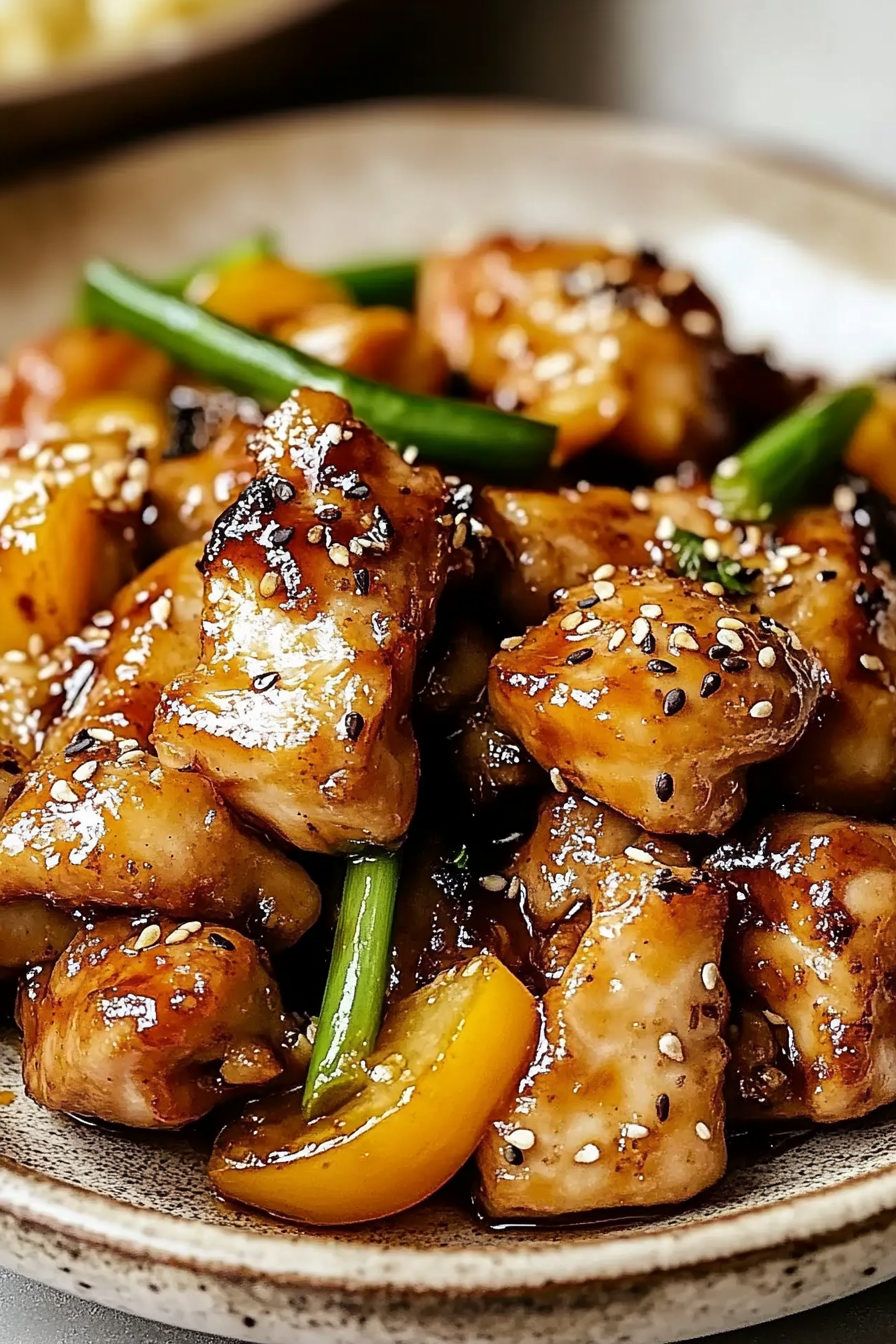
FAQs: Frequently Asked Questions About Hibachi Style Chicken
Print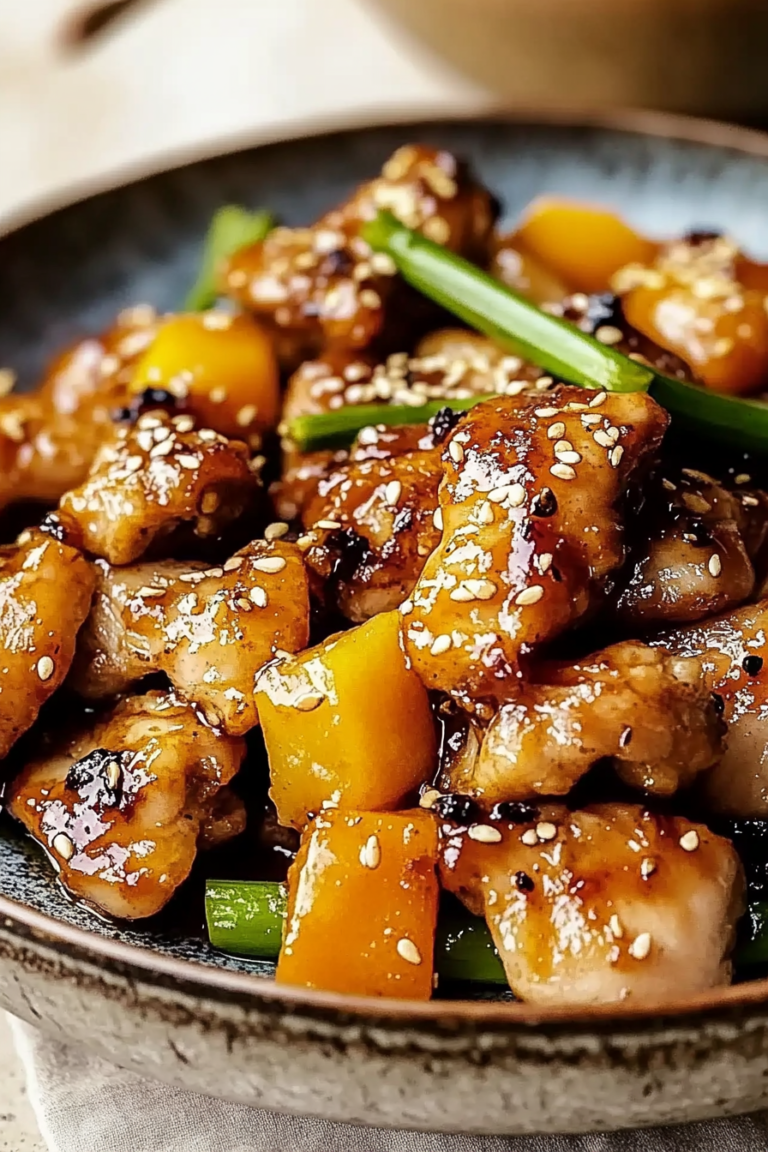
Authentic Hibachi Chicken: Simple Recipe for Japanese Restaurant-Style Flavor at Home
🍗 Savor restaurant-quality hibachi chicken at home, bursting with delicious Japanese flavors.
🔥 Quick and simple to prepare, bringing the Japanese steakhouse experience to your kitchen table.
- Total Time: 25 minutes
- Yield: 4 servings 1x
Ingredients
1 lb boneless, skinless chicken breasts, cut into bite-sized pieces
Salt and pepper, to taste
1 tablespoon butter or sesame oil
1 teaspoon minced fresh garlic
1 teaspoon minced fresh ginger
1 1/2 tablespoons soy sauce
1 1/2 tablespoons teriyaki sauce, mirin, or hoisin sauce
Optional Yum-Yum Sauce:
1 cup mayonnaise
1 tablespoon melted butter
1/2 tablespoon Sriracha sauce or ketchup
1/4 teaspoon paprika
1 teaspoon garlic powder
1 teaspoon onion powder
1/8 teaspoon cayenne pepper
1 tablespoon sugar
1 tablespoon mirin (optional)
1–2 tablespoons water
Instructions
1. Prepare the sauces: In a bowl, mix the soy sauce, teriyaki or mirin, and a pinch of pepper. Set aside.
2. Heat butter or sesame oil in a skillet over medium-high heat. Add minced garlic and ginger, and sauté until fragrant.
3. Season the chicken pieces with salt and pepper, then add them to the skillet. Sear until browned.
4. Pour the prepared sauce over the chicken, stirring to coat each piece. Allow the sauce to thicken slightly and the chicken to develop a light char.
5. Drizzle with sesame oil before removing from heat. Serve with hibachi rice, noodles, or sautéed vegetables.
For Yum-Yum Sauce:
1. Combine mayonnaise, melted butter, Sriracha or ketchup, paprika, garlic powder, onion powder, cayenne pepper, sugar, and mirin if using. Add water to reach desired consistency.
2. Serve alongside the chicken as a dipping sauce.
Notes
🧄 Use fresh garlic and ginger to enhance the dish’s natural flavors.
🔥 Utilize a wok or cast iron skillet for optimal heat distribution and searing.
🌡️ Cooking on high heat ensures the chicken absorbs the sauce and browns beautifully.
- Prep Time: 10 minutes
- Resting Time: 5 minutes
- Cook Time: 15 minutes
- Category: Main Course
- Method: Sautéing
- Cuisine: Japanese
- Diet: Non-Vegetarian
Nutrition
- Serving Size: 1/4 of recipe
- Calories: 380 kcal
- Sugar: 5 g
- Sodium: 900 mg
- Fat: 25 g
- Saturated Fat: 6 g
- Unsaturated Fat: 15 g
- Trans Fat: 0 g
- Carbohydrates: 8 g
- Fiber: 1 g
- Protein: 28 g
- Cholesterol: 120 mg







